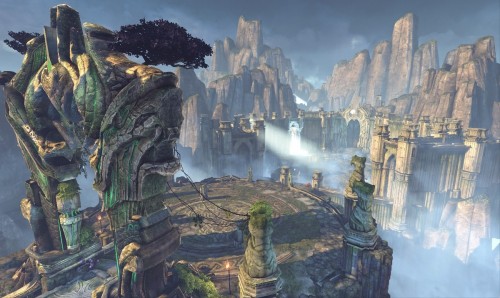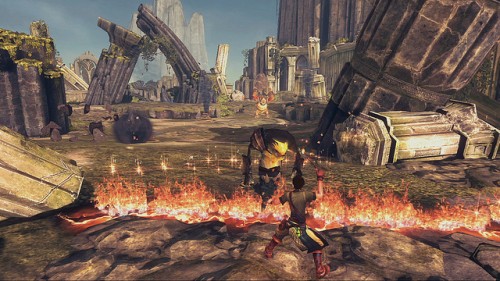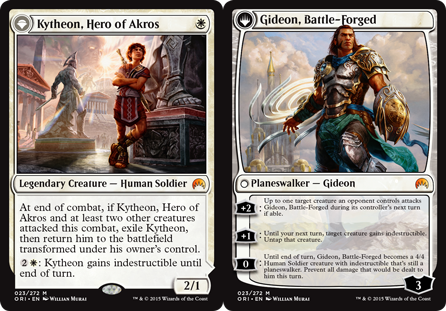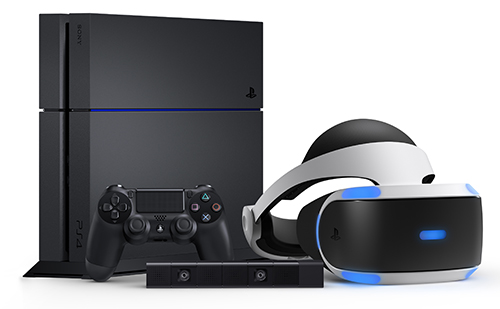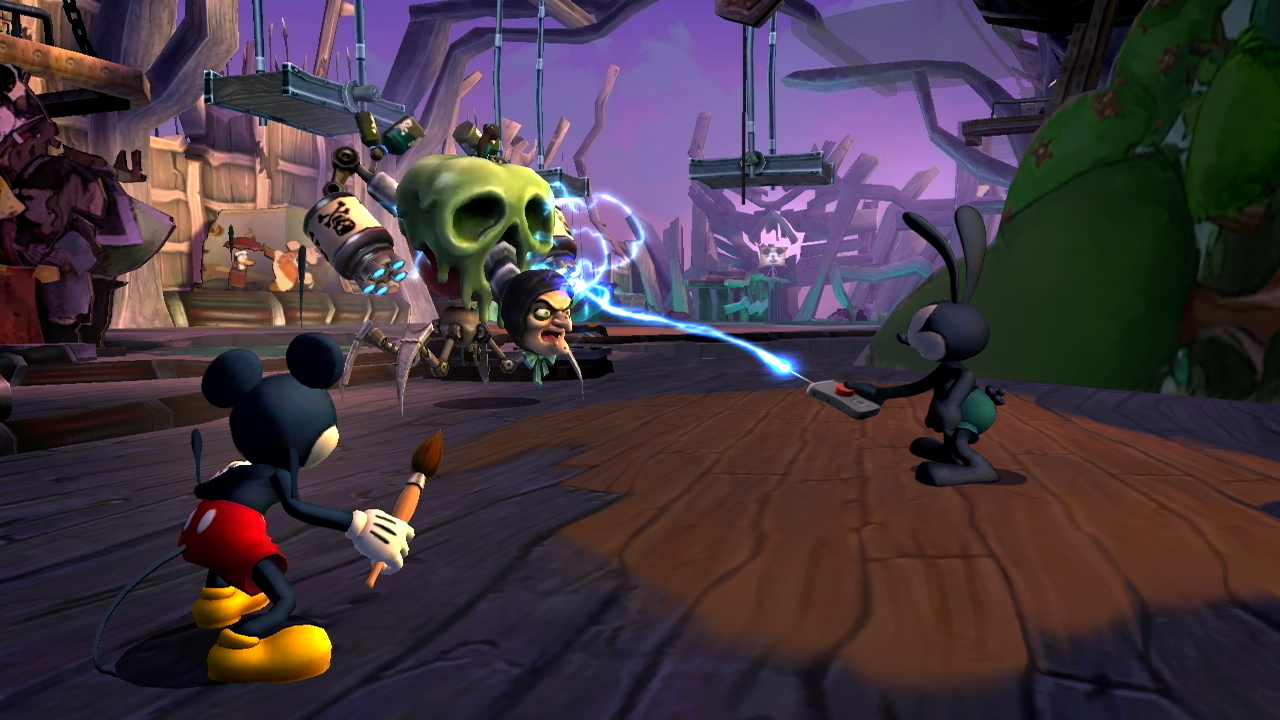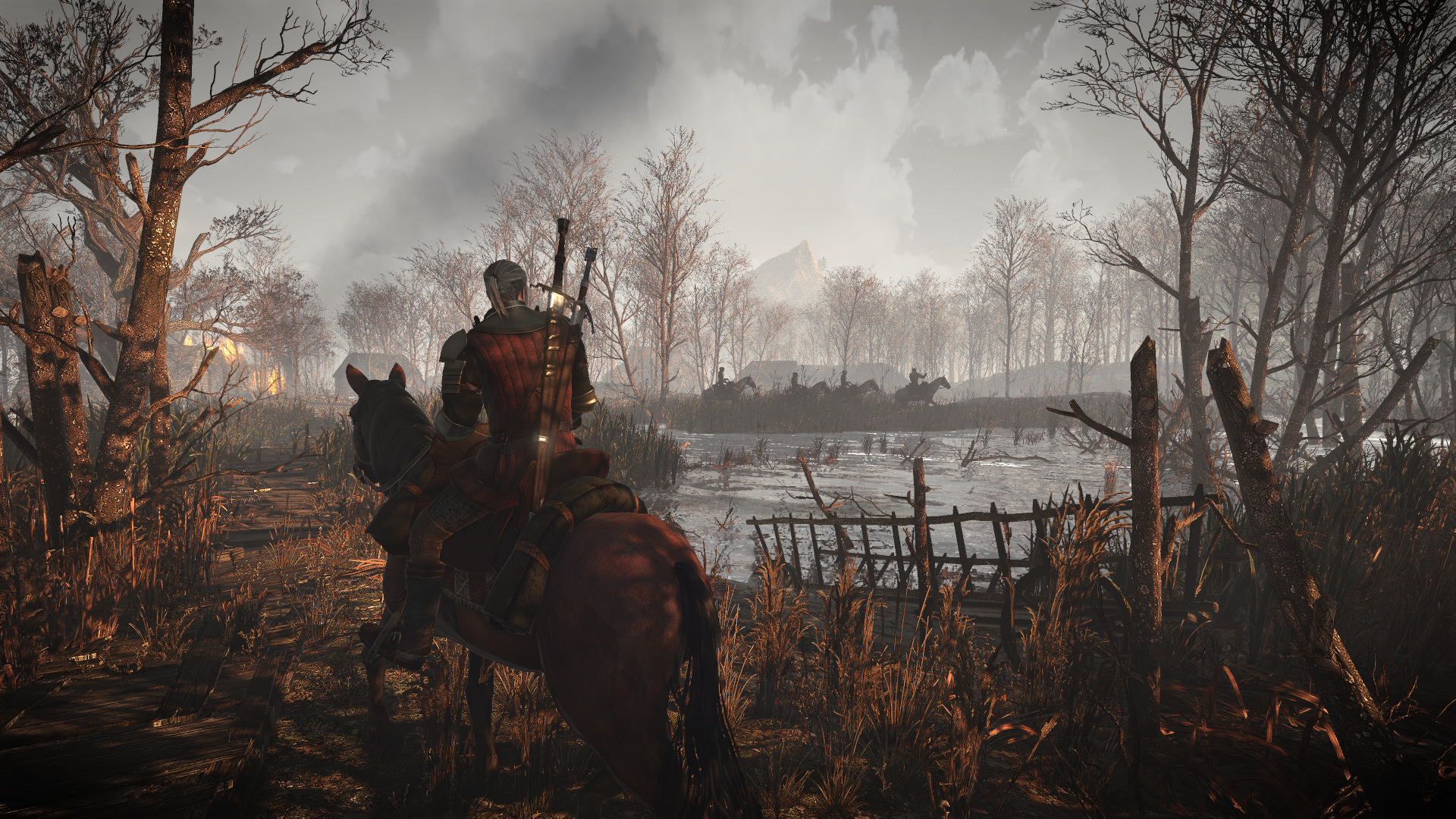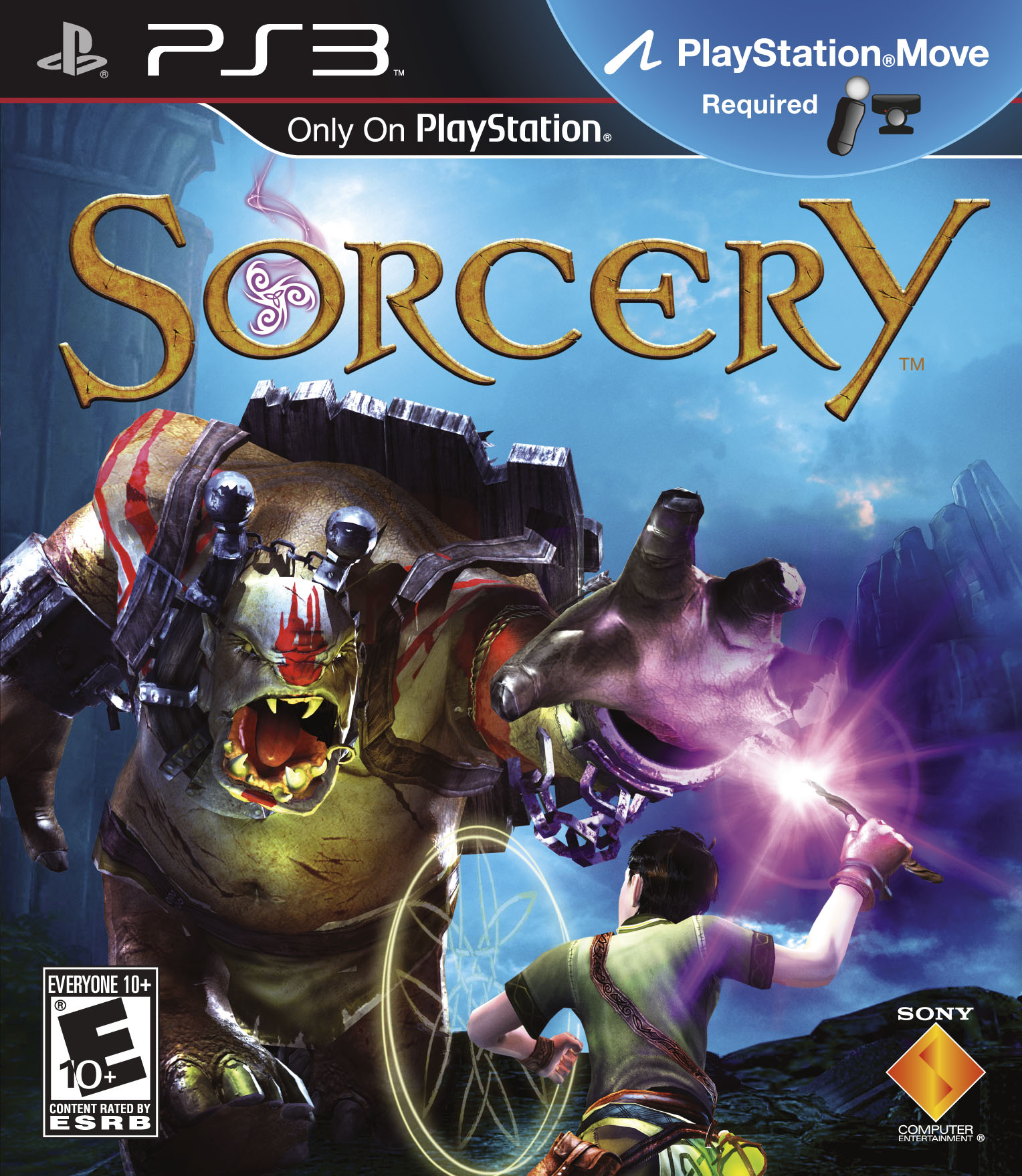
Sony’s Sorcery has been a long time coming, first announced all the way back at E3 2010 as a flagship PlayStation Move title. It’s almost 2 years later, and the Move has been around for a while, with an unfortunate dearth of quality titles to take advantage of it (a problem experienced by all of the motion control options out there). However, Sorcery is a proper full original adventure title that requires the Move to play, rather than using it as a gimmick or an option. The pertinent question is – is this a good thing?
Sorcery has a pleasant enough atmosphere, and it looks and sounds quite good indeed. The environments are often expansive, even if you run down linear paths, and you often find cool Celtic carvings, statues and runes that help give the game the same kind of mystic quality the earlier Folklore had. Characters are styled in a cartoony fashion, but it matches their personalities. Finn, the main character, and his companion Erline banter back and forth with sly quips as most animated couples do, with Finn the oddly-American overly-keen youngster and Erline the cautious voice of reason. Both voice actors do fine jobs, and their chemistry works well, even if the dialogue isn’t necessarily that funny.
The story is conveyed through cost-cutting storybook cut-scenes, showing still frames of the action. Finn is apprentice to a sorcerer, Dash, and forever trying to increase his magical prowess at any every opportunity. He’s teamed with a talking cat named Erline, who is soon revealed to be no pet at all – in fact she’s a faerie princess in disguise, hiding from her mother, the Nightmare Queen. A mishap brings her to the Queen’s attention once again, who soon takes Dash out of the picture. Out on his own for the first time, it’s up to Finn to protect Erline as well as his world as it comes under siege by her forces.
Most of Sorcery‘s gameplay involves dueling these forces. Your standard, and most often used attack, is the arcane bolt. You basically flick the Move controller in the direction of the enemy you’re aiming at to fire, and never run out of ammo. You can curve your shots by flicking the controller sideways, although this didn’t always work for me. In fact, the Move occasionally had a bit of a tough time detecting the direction I was flicking in as well. This can be remedied by simply strafing around the enemies using the navigation controller and firing away, although the 1:1 motion control starts to give way to waggle-play by this point, especially when there are many enemies on-screen. Playing on ‘Gamer’ difficulty, I got swamped by enemies fairly regularly as was forced to back into a corner, firing flaccidly as the Move failed to recognise all of my shots.
There are several types of ammunition to change things up, including elemental magic. For instance, earth magic can create fairly ineffectual earthquakes, while ice magic can more usefully freeze enemies solid for one-hit shatterings. These spells have limited ammunition, which recharges slowly. Finn also picks up other moves, like a slam attack that creates a short-range shockwave, which is useful in dealing with packs, but only charges by chaining attacks together. Some light RPG elements are at play, with a potion-creation system that sees you mixing ingredients to make potions with permanent effects, such as boosting your damage or health.
Sorcery definitely tries to make as much use of the Move controller as possible, mostly by exploiting its most noticeable feature – the light ball. The colour of the ball matches your wand – so if you’re casting purple arcane spells, the controller will glow purple as well. If you’re using a blue ‘mend’ spell, it’s blue. Restoring health is done by shaking the controller while holding square. This causes the ball to slowly change to red. Once it’s done, you hold it up to your lips and ‘drink’. It’s a really cool little motion, but it can be annoying when you’re in the middle of a battle. Having to drop what you’re doing, waggle and down a potion while dodging arrows may be more realistic, but it’s tricky and can cost just as much health as you stood to restore.
For kids with a Move, I can see Sorcery being a winner. Its got interesting locations, a fun story, cool uses for the Move technology and a reasonable level of challenge. There’s nothing too offensive or violent here, and it’s a quality family title. However, it is a fairly short one – coming it at around six hours for a single-player playthrough, and there isn’t a whole lot of replay value. If you’re an adult looking for a Move title to justify owning the contraption, then this is one of the best Move games out there. It’s just not necessarily on par with the PS3′s greatest titles. It’s fun enough despite its flaws, and worth a rental at the least.
Likable characters | Cool Celtic environments | Neat Move features
Quite a fair bit of waggling | Short | Some motions make things trickier than they need to be

